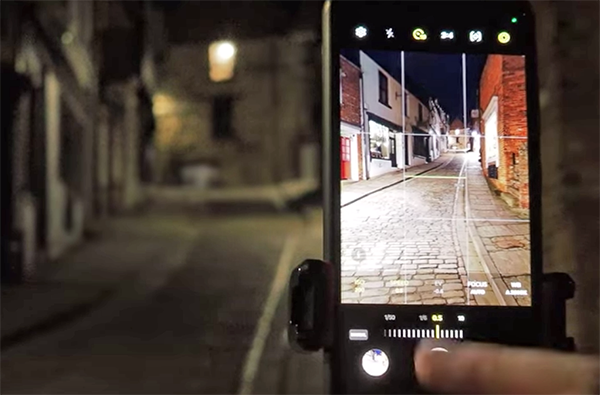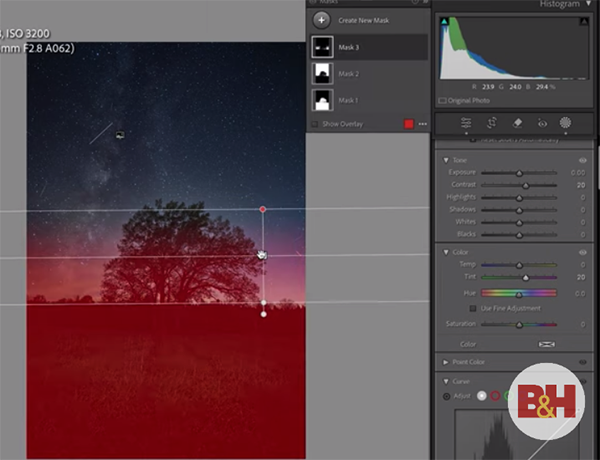What is sleepmaxxing? I asked sleep experts how to implement the viral social media trend at home
Sleepmaxxing has been making waves over social media – we asked the experts to cut through the noise and explain how to sleep well
Smartphone camera technology has advanced to the point that it’s now long past time to stop looking down on photographers who pursue our craft with a mobile device in their hand. After all, with four billion smartphones capturing 73% of all images, it’s time to embrace the power of your Apple or Android phone, and that’s the topic of today’s tutorial from the My Photo Journey YouTube channel.
Today’s instructor is a notable British outdoor photographer who goes by the handle Dawley Lad. This behind-the scenes episode takes you on a picturesque stroll through Lincoln’s charming Cathedral quarter where Dawley demonstrates a number of techniques as he captures excellent images of Little Read Gallery, charming Olivares Café, and Steep Hill’s iconic Norman House at the base of a historic hill.
Dawley’s vibrant and artistic images are all you need to be convinced that his straightforward methods deliver awe-inspiring photos when shooting after the sun drops below the horizon. He shares a variety of tips for using the Pro mode on your phone just like you employ various techniques with a DSLR or modern mirrorless camera.

The discussion includes the most appropriate smartphone settings for shooting after dark, like adjusting highlights and shadows to make the most of different nighttime scenes even when shooting images in Jpeg mode. Thoughtful composition is part of the process, and you’ll learn about framing tools that are readily available with most phones.
In other words, the goal is to expand your expectations beyond capturing images that could be generously described as mere snapshot photography. We suggest having your phone handy so you can experiment with your newfound knowledge as Dawley describes his favorite camera settings and techniques.
All modern smartphones include a Night mode, and you’d be excused for assuming this is the best approach to take for this specific task. But Dawley demonstrates why the Pro mode is usually preferable because it provides far more control for adjusting various key parameters like ISO, shutter speed, and EV compensation.

Dawley even uses this advanced mode to alter focus point and white balance. He also explains the benefits of other helpful tools like a phone’s self-timer that can really help when using low ISO settings to minimize noise and achieve maximum image quality under low-light conditions. Another important tool enables you to match the aspect ratio to the particular subject at hand.
If you’re unconvinced that your smartphone IS a real camera, this lesson will change your mind in the next 14 minutes. The My Photo Journey YouTube channel offers many more instructional videos for beginners and experienced photographers alike.
You may also benefit from watching the recent tutorial we featured with another accomplished shooter who demonstrates several unconventional shooting techniques that enable you to capture dramatic wide-angle outdoor photographs with an uncommon look.
This post-processing tutorial explores some of the most useful (and underutilized) sliders in both Lightroom and Lightroom Classic. If you’re in the habit of skipping over Lightroom’s Classic’s Basic panel, or Lightroom’s Light and Color panels in search of more advanced tools you’ll want to pay close attention to this tutorial with pro Forest Chaput de Saintonge.
Forest is a professional photographer, educator, and the former Director of Rocky Mountain School of photography. He introduces today’s 14-minute episode like this: “In my opinion these oft-ignored sliders are among the most important tools in the entire Lightroom ecosystem, as they give us the ability to transform our Raw files into what we saw with our eyes.”
Another important topic is the importance of applying these sliders in a specific order because each one builds on the previous adjustment to create a compelling edit with a controlled workflow. It’s a concept we’ve stressed repeatedly in the past that’s definitely worth repeating.

Here’s another key consideration: “I really believe that to get the most out of Lightroom or Lightroom Classic you should be shooting Raw.” Forest also urges you to remember that Raw files aren’t meant to look amazing straight out of the camera. Or as he says, the job of Lightroom’s Basic panel, or Lightroom’s Light and Color panels, is to enhance a Raw photo with a realistic look that faithfully represents the scene you witnessed through the viewfinder.
Forest begins with tonal controls for perfecting exposure and contrast. He explains why the first tool he employs in virtually every edit, regardless of subject matter, is the Exposure slider. To demonstrate how this works he recommends dragging the slider to the right and to the left without focusing on a specific area within the frame. Instead, “we’re looking for the entire image to appear as properly exposed as possible.”
Doing this often means that some areas will initially appear too bright, while others are overly dark. Forest then demonstrates how the Black slider can be employed to quickly refine tonal balance throughout the frame. In essence, this adjustment enables you to determine exactly how dark you want the darkest elements in a photo to appear.

Forest turns his attention to other straightforward tone controls before moving on to simple sliders that enable you to perfect color balance while retaining a natural look. They’re all super simple to use and punch far above their weight. So don’t fool yourself into thinking that you are too “advanced” to make use of these basic tools.
Once you’re done watching head over to Forest’s popular YouTube channel where there are many more how-to videos for improving your shooting and post-processing skills.
We also recommend watching a tutorial we featured with another image-editing expert who demonstrates several “must-know” post-processing hacks that will speed up your Lightroom workflow and deliver eye-catching photographs.
We’ve all marveled at spectacular photos of the nighttime sky, and the Milky Way is one of the major attractions. Unfortunately, many photographers take a pass on this epic opportunity because of the misconception that exotic gear is required or they lack the necessary skills.
This comprehensive guide from the B&H Photo Video YouTube channel explains everything necessary for capturing beautiful images without fumbling around in the dark, and then enhancing your Milky Way images with a straightforward post-processing workflow. Instructor Matt Zefi promises that after watching today’s 19-minute episode you’ll be able to nail amazing images every time.
Zefi is an accomplished NY-based photographer and instructor known for his ability to simplify seemingly complicated tasks. In this behind-the-scenes lesson from the Great Smoky Mountains you’ll follow Zefi in the field as he provides numerous “foolproof” techniques from planning to post so that you can get in on the action.

Thoughtful planning is especially important for all sort of astrophotography, and that’s where Zefi begins. As he says, “You want to make sure that you’re in the right spot at the right time and this depends upon the hemisphere you’re in and the specific location you choose.” Zefi reveals a useful app that provides this information at glance.
It’s also important to understand the phase of the moon and be aware of light pollution while aiming for a new moon when you’ll benefit from the darkest sky and the brightest stars. Zefi moves on to a discussion of gear and why a fast lens is very helpful, and then he illustrates a few simple techniques for attention-grabbing composition.
Configuring the camera properly is also an essential part of the equation and Zefi walks you through the camera settings he recommends. These are different from those you use for other photographic tasks, and they’re dependent upon the specific lens in use.

The popular Photopills app mentioned above is a big help is this regard too. Zefi plugs in his focal length and other basic information, and the app recommends the best shutter speed to use as a starting point before experimenting with other effects.
Zefi concludes this very helpful primer by pulling up his images on the computer and demonstrating a simple post-processing technique that anyone can master in minutes. Once you set side your apprehension and follow Zefi’s advice, we guarantee that you’ll own the night from now on.
Be sure to visit the popular B&H Photo Video YouTube channel where there are many more helpful lessons on popular shooting and image-editing techniques.
And don’t miss another eye-opening tutorial we featured recently in which an English pro demonstrates how to create stunning “fine art’ landscape photographs by eliminating the horizon line during post processing.
